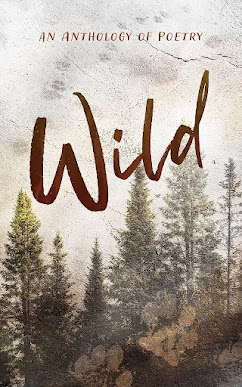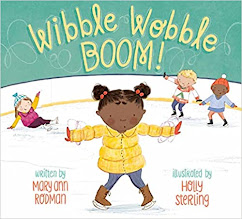Today, I was supposed to continue our series of posts in honor of
National Bullying Prevention Month. Instead, I've decided to dedicate this blog post in memory of my friend and fellow writer, Laura Crawford, who died on September 30 at the much-too-young age of 46. And since today is also
Poetry Friday, I've included a poem at the end of this post inspired by Laura.
Those of you who've been following this blog for awhile may recognize Laura's name--she was our very first
"Student Success Story" interview, posted back in 2009. At that time, I had no idea Laura had been diagnosed with chronic lymphatic leukemia (CLL) the year before. As she wrote on her
CaringBridge page, her disease was managed effectively with chemo and treatment until this past May, when it became more aggressive. That's when Laura chose to finally share the information about her illness with her many friends in the children's writing community. We were all shocked at the news. Laura was such a vibrant, energetic, optimistic person. You can get a sense of her vitality in the photo below, which is how I always picture her--bright-eyed and smiling. It was hard to imagine that she'd been dealing with cancer for five years.
 |
| Photo courtesy of Jennifer DuBose |
But after the shock wore off, we still had hope, mainly because Laura herself sounded so hopeful. She was preparing for a bone marrow transplant. On September 22, she posted the following on her Facebook page:
"had a FANTASTIC weekend! I feel normal...and that is saying a lot. Thanks for all the visitors, laughs, treats, jello, ice cream and support of the new 'hairdo.' I'm so very blessed."
Like so many of Laura's friends, I was heartbroken when she passed away eight days later. It didn't seem possible. Even now, nearly two weeks later, my eyes fill with tears at the thought that I'll never see her smiling face again, at least not in this life.
We have a custom on our
SCBWI-Illinois listserv to share "good news" about our writing and illustrating projects at the beginning of each month. Given the timing of Laura's death, Lisa Bierman, the Illinois chapter's co-regional advisor, invited members to share a short memory of Laura instead. Laura was a long-time
SCBWI Network Representative for the Geneva, IL Network and a regular volunteer at the annual
SCBWI-IL Prairie Writer's Day, so she was well-known throughout our writing community. The email tributes poured in. It was amazing, and uplifting, to read about how Laura had touched so many lives.
In my email to the listserv, I talked about how I first met Laura as my student, when she took my College of DuPage class in Writing for Children back in the summer of 2001. As I mentioned above, she was also our first
"Student Success Story Interview" here on TeachingAuthors. After her death, I reread that blog entry and heard again Laura's exuberant voice. I also recalled how she almost hadn't made it into my class because it was filled before she registered. She'd called the college and asked if there was any way she could still register for the class, and my supervisor contacted me. I normally don’t make exceptions regarding maximum enrollments because I want to allow enough time for manuscript critiques, and I returned Laura's call planning to tell her so. I remember sitting in my home office talking with Laura. I could hear the enthusiasm in her voice. She told me how much she wanted to take the class, and that, being a teacher, she didn't have time to do so during the school year. When she asked me to please let her join the class, I couldn’t say no.
J
I’m so grateful I made the exception to include Laura in the class. It was the beginning of a long, rewarding friendship. As it turned out,
Cathy Cronin was also in that class. She, too, became a "
Student Success Story" and a friend to both Laura and me. On Wednesday, October 2, Cathy and I drove together to attend Laura's wake and say a final good-bye. We learned from Laura's sisters that she'd kept writing and editing up until the end--she was optimistic that after her bone marrow transplant she'd be well again.
That evening, I decided I wanted to dedicate this blog post in Laura's memory, and to write a poem in her honor. I'd saved all the tributes posted on the SCBWI-Illinois listserv with the idea that I might write a "found poem" from what people had shared. Member after member wrote of Laura's warm smile, infectious laugh, generous spirit, amazing optimism, welcoming nature, and fun sense of humor. I soon realized I didn't want to write a "sappy" poem--Laura wouldn't have wanted that.
Then I thought of what Laura said in her Student Success Story interview about being a "math and science person." That gave me the idea to write my poem in the form of a “Fib,” a 5-line, 20-syllable poem with the number of syllables per line based on the Fibonacci sequence: 1/1/2/3/5/8. I thought this form would be especially appropriate because the Fibonacci sequence is often found in nature, and Laura loved nature. Plus, "Fibs" tend to be rather playful. [To read more about Fibs, see
this blog post by Greg Pincus, author of the recently released middle-grade novel,
The 14 Fibs of Gregory K (Arthur A. Levine Books).]
The Fib that follows was inspired by all the comments to the listserv, but especially by what Cathy Cronin wrote:
"I will always treasure her friendship. Her bright spirit will live on in all the hearts that she's touched and in all of her wonderful books. I am keeping a picture of her by my laptop as a reminder to 'Live like Laura.' She knew what was important to her and spent her time well. "
I agree with Cathy. Laura lives on in the hearts of all who knew her, not only the members of the children's writing community, but also the students she taught in her 20 years at Sleepy Hollow Elementary School. You can read more about how she touched their lives
in this article.
Finally, here's my Fib poem in memory of Laura.
To Live Like Laura
by Carmela Martino
Smile
wide.
Embrace
everyone.
Laugh with gusto.
Leave us grateful to have known you.
poem © 2013 Carmela Martino. All rights reserved.














.JPG)













